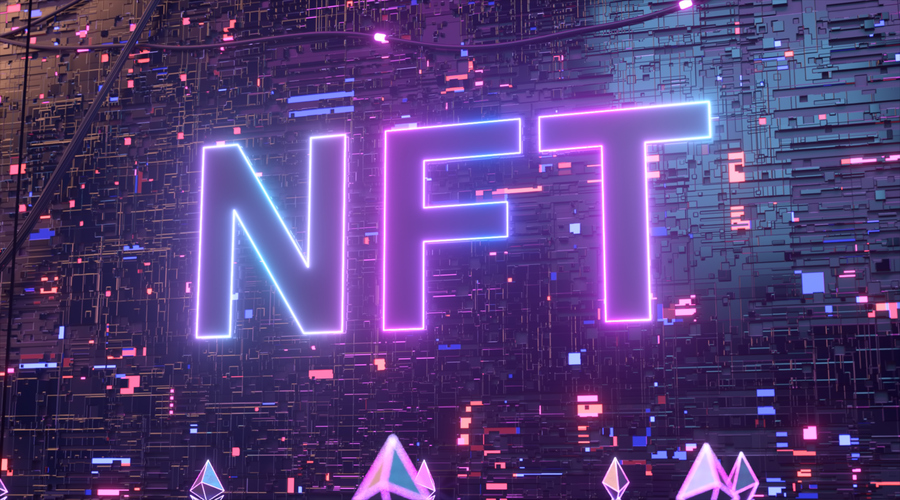
The Scalability Challenges in Achieving Widespread NFT Interoperability
Introduction
NFT interoperability, the seamless transfer and utilization of NFTs across different blockchain networks, holds tremendous potential for the digital collectibles and tokenized asset space. However, achieving widespread NFT interoperability comes with its own set of scalability challenges. In this article, we will explore the scalability challenges that arise in the pursuit of achieving widespread NFT interoperability, along with potential solutions to address them.
Understanding NFT Interoperability Scalability
NFT interoperability scalability refers to the ability of the underlying infrastructure and protocols to handle a growing number of cross-chain transactions and interactions seamlessly. Scalability is crucial to meet the increasing demand for NFT interoperability and ensure a smooth user experience, regardless of the number of participants and the complexity of cross-chain operations.
Scalability Challenges in NFT Interoperability
1. Blockchain Network Congestion
Blockchain network congestion poses a significant scalability challenge in achieving widespread NFT interoperability. As the popularity of NFTs grows, the transaction volume on blockchain networks increases, resulting in congestion and slower transaction processing times. This congestion hinders the efficient transfer of NFTs between different platforms and ecosystems, impeding interoperability.
2. Cross-Chain Communication Speed
Efficient cross-chain communication is essential for achieving seamless NFT interoperability. However, the speed at which different blockchain networks communicate and validate transactions varies. Slow cross-chain communication can introduce delays and inconsistencies, negatively impacting the user experience and hindering the widespread adoption of NFT interoperability.
3. Interoperability Protocol Compatibility
The compatibility of interoperability protocols across different blockchain networks presents a significant scalability challenge. Currently, there is a lack of standardized protocols that can seamlessly facilitate the transfer of NFTs between diverse blockchain ecosystems. The absence of protocol compatibility hampers the smooth interoperability of NFTs and limits their transferability across platforms.
Solutions to Enhance Scalability in NFT Interoperability
1. Layer 2 Scaling Solutions
Layer 2 scaling solutions, such as sidechains and state channels, can enhance scalability in NFT interoperability. These solutions allow for off-chain transactions and computations, reducing the burden on the main blockchain network. By moving certain operations off-chain, layer 2 scaling solutions alleviate congestion, increase transaction throughput, and improve the overall scalability of NFT interoperability.
2. Optimized Cross-Chain Bridges
Developing optimized cross-chain bridges that enable efficient and fast transfer of NFTs across blockchain networks is crucial for scalability. These bridges should be designed with scalability in mind, utilizing innovative techniques like sharding and parallel processing to enhance transaction speed and throughput. Optimized cross-chain bridges streamline the interoperability process and contribute to the scalability of NFT transfer and utilization.
3. Standardized Interoperability Protocols
Establishing standardized interoperability protocols is key to enhancing scalability in NFT interoperability. Consistent protocols ensure compatibility and seamless communication between different blockchain networks. Collaborative efforts among industry stakeholders, including blockchain developers, standardization bodies, and blockchain communities, are necessary to define and implement interoperability protocols that can scale effectively.
The Importance of Scalability in NFT Interoperability
Scalability is vital for the widespread adoption and success of NFT interoperability. As the demand for NFTs and cross-chain transactions continues to grow, addressing scalability challenges becomes paramount. Scalability solutions enable a larger number of users to participate, maintain transaction speed, and ensure a seamless transfer experience. By enhancing scalability, NFT interoperability can reach its full potential, fostering a vibrant and interconnected ecosystem of digital collectibles and tokenized assets.
Interoperability Challenges in Cross-Platform Metadata and Token Standards
Achieving widespread NFT interoperability requires addressing challenges related to cross-platform metadata and token standards. Different blockchain networks may have varying formats and standards for metadata representation and tokenization. Harmonizing these standards and establishing cross-platform compatibility is essential to ensure seamless interoperability and accurate representation of NFT attributes across different platforms.
Scalability Considerations in NFT Data Storage and Retrieval
Scalability challenges also arise in NFT data storage and retrieval. As the number of NFTs and their associated metadata increases, efficient storage and retrieval mechanisms must be in place to handle the growing volume of data. Scalable storage solutions, such as distributed file systems or decentralized storage networks, can help ensure fast and reliable access to NFT data, supporting the scalability of NFT interoperability.
Interoperability Testing and Validation Processes

To achieve widespread NFT interoperability, rigorous testing and validation processes are necessary. Testing interoperability across different blockchain networks and platforms helps identify and resolve potential issues or inconsistencies. Establishing comprehensive testing frameworks ensures the reliability and scalability of interoperability solutions. This includes:
- Functional testing: Verifying the functionality of interoperability protocols and mechanisms to ensure seamless transfer and utilization of NFTs across platforms.
- Data validation: Ensuring the accuracy and integrity of data during cross-chain transactions, validating the consistency of NFT attributes and metadata.
- Performance testing: Assessing the scalability and efficiency of interoperability solutions under different network conditions and transaction volumes.
By conducting thorough testing and validation, interoperability solutions can be refined, and any potential issues or bottlenecks can be addressed, leading to more robust and reliable NFT interoperability.
Economic and Incentive Models for NFT Interoperability
Designing effective economic and incentive models is crucial for driving widespread adoption of NFT interoperability. Incentives can encourage platform operators, developers, and users to participate in interoperability efforts, contributing to the growth and sustainability of the ecosystem. Some key economic and incentive models for NFT interoperability include:
- Token rewards: Providing incentives in the form of tokens to participants who contribute to the development, testing, or implementation of interoperability solutions.
- Staking mechanisms: Allowing users to stake their tokens as collateral to support the security and stability of interoperability networks, rewarding them with additional tokens or network benefits.
- Governance structures: Establishing governance models that give stakeholders a voice in decision-making processes related to interoperability standards, protocols, and upgrades.
By aligning the interests of stakeholders and creating incentives for collaboration, economic and incentive models drive active participation and foster a thriving ecosystem of NFT interoperability.
Interoperability Governance and Standards Bodies
Establishing interoperability governance and standards bodies plays a vital role in driving widespread NFT interoperability. These bodies facilitate collaboration, coordinate efforts, and define best practices and standards for interoperability. Key aspects of interoperability governance and standards bodies include:
- Collaboration facilitation: Bringing together industry stakeholders, developers, researchers, and regulators to share knowledge, exchange ideas, and collaborate on interoperability initiatives.
- Best practice definition: Establishing guidelines and best practices for interoperability protocols, security standards, and data privacy to ensure a consistent and secure interoperability experience.
- Standards development: Defining technical standards and specifications for interoperability, enabling seamless interaction and transfer of NFTs across different blockchain networks.
- Evolution and adaptation: Continuously evolving the interoperability standards and frameworks to keep pace with technological advancements and changing industry requirements.
The Future of NFT Interoperability Scalability
- Technological advancements, research, and community-driven efforts will contribute to the development of scalable solutions.
- Scalability considerations will drive innovation in NFT interoperability to handle growing user demands.
- Seamless transfer and utilization of digital assets will be supported through enhanced scalability.
Energy Efficiency and Scalability in NFT Interoperability
- Promoting energy-efficient blockchain networks and sustainable practices is crucial for achieving scalability in NFT interoperability.
- Adoption of energy-efficient consensus mechanisms like PoS or PoA can enhance scalability and long-term viability.
User Experience and Scalability in NFT Interoperability
- Ensuring a seamless and user-friendly experience is vital for widespread adoption of NFT interoperability.
- Optimizing transaction processing, providing clear instructions, and intuitive user interfaces enhance user experience and scalability.
Interoperability Use Cases in Cross-Industry Applications
- NFT interoperability has potential across various industries like supply chain management and financial asset tokenization.
- Transparent tracking, verification, efficient trading, and fractional ownership are among the benefits of interoperability use cases.
Scalability Challenges in Cross-Chain Governance and Consensus
- Coordinating and aligning consensus protocols across different blockchain networks is crucial for ensuring scalability in NFT interoperability.
- Establishing interoperability standards, consensus frameworks, and governance models facilitate seamless coordination and decision-making.
The Role of Research and Development in NFT Interoperability Scalability
- Continuous research and development efforts contribute to addressing scalability challenges in NFT interoperability.
- Exploring innovations like sharding, sidechains, and layer 2 scaling techniques enhance scalability.
Interoperability Challenges in Cross-Platform Smart Contract Execution
- Executing smart contracts across multiple blockchain networks presents scalability challenges.
- Compatibility between different virtual machine environments and consensus algorithms is essential for efficient cross-platform smart contract execution.
Scalability Considerations in NFT Metadata Storage and Retrieval
Metadata associated with NFTs, such as descriptions, provenance, and additional attributes, are integral to their value and usability. As the number of NFTs and associated metadata grows, efficient storage and retrieval mechanisms become crucial for scalability. Implementing scalable metadata storage solutions, such as decentralized databases or distributed file systems, ensures fast and reliable access to NFT metadata, supporting the scalability of NFT interoperability.
Cross-Chain Asset Bridging and Atomic Swaps
Cross-chain asset bridging and atomic swaps are essential components of NFT interoperability, enabling the seamless transfer of assets between different blockchain networks. However, ensuring scalability in cross-chain asset bridging presents challenges, such as transaction confirmation times and the management of liquidity across multiple networks. Implementing efficient cross-chain bridging protocols, liquidity pools, and optimizing transaction processing can enhance scalability in asset transfers and atomic swaps.
Conclusion
Scalability is a critical aspect to consider in achieving widespread NFT interoperability. The challenges of blockchain network congestion, cross-chain communication speed, and interoperability protocol compatibility must be addressed to ensure a scalable and efficient system. Through layer 2 scaling solutions, optimized cross-chain bridges, and standardized interoperability protocols, scalability in NFT interoperability can be enhanced, fostering the growth and adoption of NFTs across diverse blockchain networks. Emphasizing scalability is essential for building a robust and sustainable ecosystem for the transfer and utilization of NFTs, ultimately driving the widespread adoption of NFT interoperability.


